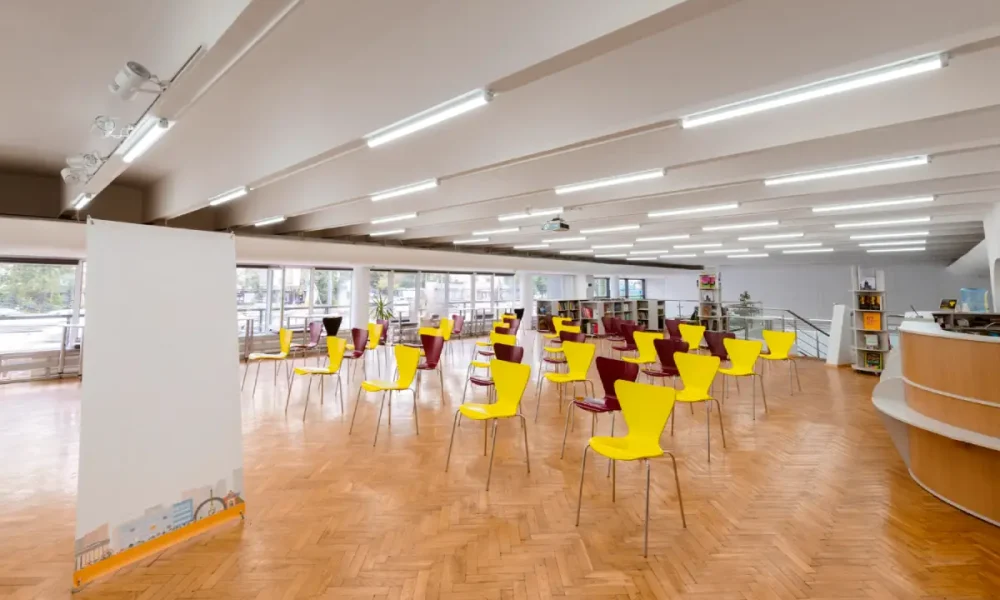Table of Contents
There’s no denying the significance of architecture and design in shaping the modern landscape. While many students aspire to become architects or designers, only a few ultimately pursue this path professionally. Over the past two decades, interior design has gained significant recognition and carved out a distinct niche.
The best colleges for interior design in India provide dynamic learning environments that foster growth through hands-on experiences, expert guidance, and immersive campus life, preparing students for a successful career in the field.
Define Interior Design & its Key Elements
Interior design is a unique blend of art and science that transforms indoor spaces to be just as compelling as a building’s exterior. As a subset of architecture and design, it encompasses a wide range of elements — from conceptual development and space planning to research, project coordination, site inspection, construction oversight, and the precise execution of design plans.
The study for a bachelor’s degree in interior design will include the key elements of interior design, explained below.
- As an interior designer, you often work within limited space, making smart space utilisation essential.
- Shapes can create unique visual effects, and designers often experiment with forms that complement the overall structure.
- Patterns add personality and meaning to a space while enhancing its aesthetic appeal.
- Forms help create a desired effect and bring depth to the interior.
- Colour plays a major role in setting the mood and atmosphere, with designers using a wide palette to match the vision of the space.
- Lighting is another key element — it can highlight features, create contrast, and influence how a space feels.
- Lastly, texture adds dimension and visual interest, bringing beauty and character through thoughtful design choices.
The best colleges for interior design in India are not just about teaching students about the tools and techniques used in interior design, but also the ways to execute ideas under the guided lens of the faculty and staff.

Core Principles Involved in Interior Design
Like the elements of interior design, there are also seven core principles which are equally important for an interior designer to know about and thus formal college degrees are invented, to pretty much help one become an interior designer with all the ideas and skills needed in the professional space. The following is a brief description of core principles of interior design:
- Balance is essential in interior design to create visual harmony. There are three main types: symmetrical, asymmetrical, and radial balance. Understanding these helps designers use balance to enhance visual appeal.
- While space is a key element, the scale and proportion of objects within that space are equally important for achieving aesthetic harmony.
- Contrast brings character to a design by placing opposing elements together, creating a striking and memorable effect.
- Just like in music, rhythm in interior design involves repetition and patterns to guide the viewer’s eye and create flow throughout a space.
- Details matter; every choice, from materials to finishes, contributes to how balance, contrast, and rhythm come together in a room.
- A strong design also includes a focal point, like a statement piece or central feature, with surrounding elements enhancing its impact.
- Above all, the goal is to create unity, a seamless blend of all design elements and principles that results in a space that is visually pleasing and emotionally satisfying.
These principles and elements of interior design are considered as ground rules for executing a design and getting the desired effect. A strategised plan is required to make the design elements stand out and complement the entire scene.
What are the Facilities an Interior Design College Must Possess?
The top interior design colleges in India take several steps to ensure high-quality academics and practical training. Key factors such as infrastructure, campus environment, curriculum design, faculty expertise, and innovative teaching methods all play a crucial role in shaping a student’s learning experience.
Here are some essential facilities that every interior design college should offer to support student success and professional growth.
- In addition to classrooms, interior design students need access to studios and labs where they can bring their creative ideas to life through model-making and visualisation.
- As design technology evolves rapidly, students must stay updated with industry-standard software and tools.
- Colleges should offer workshops, guest lectures, and events that provide real-world exposure and industry interaction.
- The curriculum must be practical and up-to-date, with interdisciplinary and project-based learning opportunities to help students gain hands-on experience.
- Finally, colleges play a key role in supporting students’ careers through internships, placements, and training to help them succeed in interviews and build professional networks.
Studying at one of the best interior design colleges in India paves a clear path toward a career in interior design, allowing you to channel your creative flair to enhance contemporary architecture and contribute meaningfully to the built environment.





